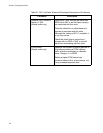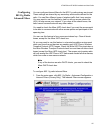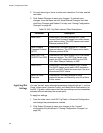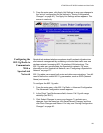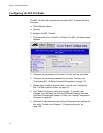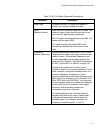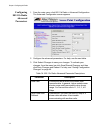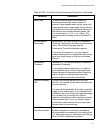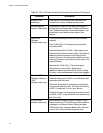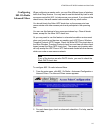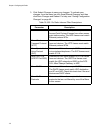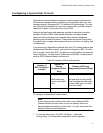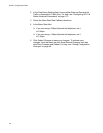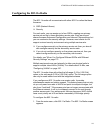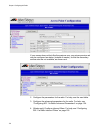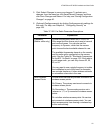
Chapter 4: Configuring the Radios
114
Enable Load
Balancing
Determines if end devices can distribute their
connections across multiple access points.
Enable Medium
Density Distribution
Determines if these access point parameters—
Enable Medium Reservation, Distance Between
APs, Enable Microwave Oven Robustness—are
distributed to end devices that support this
feature.
Data/Voice
Settings
(Master radio only)
Choose the setting that optimizes the wireless
network:
Data Traffic Only: The access point transmits
only data traffic.
Data and SpectraLink Traffic: The access point
transmits both data and voice traffic. SpectraLink
telephone frames are sent in the high priority
queue. Frames in the high priority queue are sent
ahead of frames in the normal priority queue. No
special filtering.
SpectraLink Traffic Only: The access point
transmits only voice traffic. SpectraLink
telephone frames are sent with a priority setting.
All other multicast/broadcast frames are dropped.
Disallow SSID
(Network Name) of
‘ANY’
(Master radio only)
Determines if end devices that have their SSID
(Network Name) set to ANY or are left blank can
associate with this radio.
Clear this check box to allow these end devices
to associate with this radio. Although this setting
is 802.11 compliant, it is not very secure.
Check this check box to prevent end devices with
an SSID of ANY or are left blank from associating
with this radio.
DTIM Period
(Master radio only)
Specifies the number of beacon frames to skip
before including a DTIM (delivery traffic indication
message) in a beacon frame. Setting a higher
DTIM period may conserve battery life in an end
device, but it may increase response time.
Table 34. 802.11b Radio Advanced Parameter Descriptions (Continued)
Parameter Description



